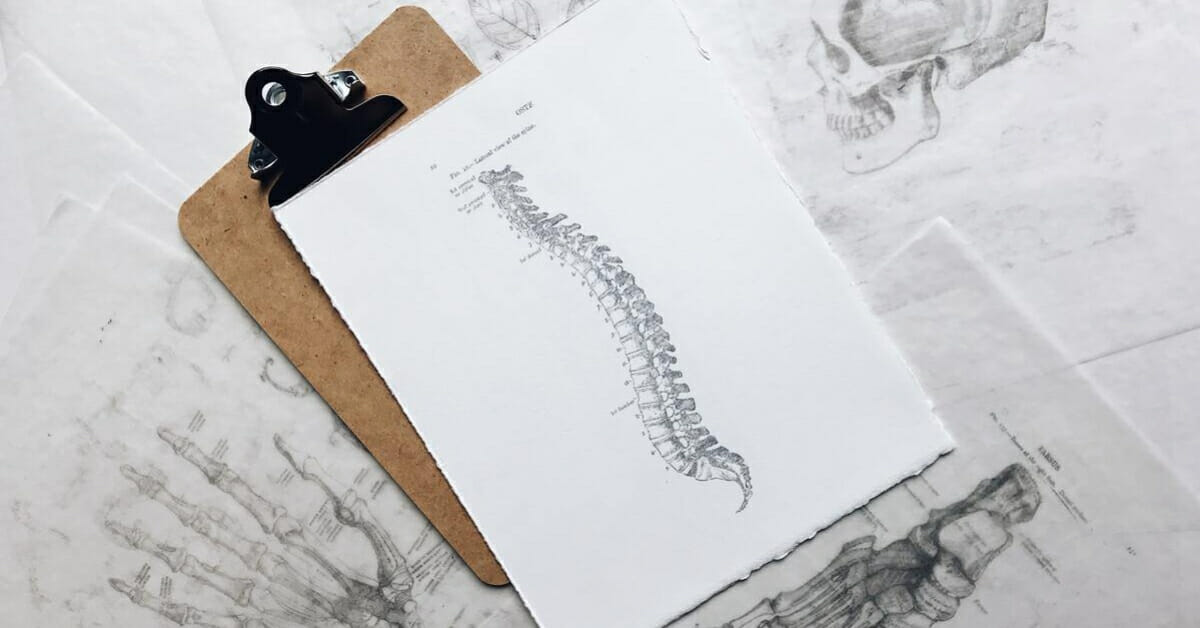Nurses are with the patient more than any other provider on the healthcare team, so you carry a big burden as a nurse to keep close watch over your patients and document every single detail of their care — no pressure though!
Below, I’m sharing what goes into good patient progress notes, from what they are to how to write them.
What Are Patient Progress Notes?
Patient progress notes are used to keep a record of a patient’s care when they are staying at a hospital. Nurses, doctors, physical therapists, and all other members of the healthcare team who provide care to the patient will document notes in the patient’s chart. All progress notes can be accessed by the members of the healthcare team in order to keep everyone aware of what is going on with the patient’s condition and care.
As a nurse, you will spend a lot of time reading patient progress notes as well as writing your own. Many nurses start their shift by reading through progress notes to get an idea of what’s going on with the patient and to prepare for their day of caring for them.
How to Properly Write Patient Progress Notes
Even though you won’t be the only healthcare provider writing patient progress notes, your notes as a nurse are some of the most important because you’ll be spending more time with the patient than any of the other providers. Here are some tips to follow to help you write effective patient progress notes.
Include essential information
There are essential pieces of information that should be included in every patient’s progress note.
Every patient progress note should include:
- Date and time
- Name of the patient
- Identification of the nurse who is writing the note
- An overview or general description of the patient
- Clinical assessment
- Any incidents that occurred
- Any changes noticed by the nurse (such as changes in the behavior, well-being, or emotional state)
- Any changes in the care (such as shift change to a new nurse or new orders placed by a doctor)
- Recommendations for further care
Use subjective and objective data
You should use subjective and objective data to craft a nursing note. Subjective data include information that the patient has provided, such as their pain level and their perspective. Objective data are what you have observed or gathered as the nurse, such as the patient’s visible state, their vital signs, or other clinical markers of their condition.
Make sure to distinguish between these two things when documenting. You can write things like “the patient states their pain level is a 10 and that they feel nauseous”. To gather subjective data prior to writing a nursing note, ask the patient questions about how they are feeling.
Use the nursing process as a guide
Whether you’ve just started nursing school or you’ve graduated, you’re likely familiar with the nursing process. I personally remember having this concept drilled into me as a brand new nursing student.
The nursing process is as follows:
- Assessment
- Diagnosis (nursing diagnosis)
- Planning
- Intervention
- Evaluation
The nursing process is a great guide for progress notes because it covers all bases. Remember, nurses can’t diagnose in the same way that doctors can, so you can discuss nursing diagnoses (such as pain or risk of infection) or you can note what the doctor has stated as the diagnosis.
Types of Nursing Documentation
Students and new graduates are often confused by all the different forms of nursing documentation. Here are some examples to help you distinguish them.
1. Charting
If you haven’t already, you’ll soon realize that charting is a big part of being a nurse. Charting includes all documentation of the patient’s care that is documented in the patient’s computerized chart. When charting patient assessments, you’ll use a computer-based spreadsheet to go through each body system and plug in information such as the patient’s pain level, how their lungs sounded, what their pulse felt like, etc. Progress notes are one aspect of charting.
2. Progress notes
Progress notes are the written notes that you’ll add to your patient’s chart when any changes occur. If the patient’s condition starts to decline or there are any changes in the patient’s care, then you will want to put a note in the chart so that it is documented. Progress notes are not only written by the nurse but by all of the providers who see the patient.
3. Handwritten notes
As a nurse, you will likely also keep some handwritten notes ( I know I did). Handwritten notes are a helpful way to jot down information as it’s happening if you’re not able to get to a computer right away.
4. Verbal communication at shift change
Another form of important communication as a nurse is the handoff report that you will give and receive at the end and start of each shift. This is an overview of each patient that is shared between nurses when a shift is changing. You’ll likely use your handwritten notes when giving your handoff report to the next nurse.
Why Is Documentation Important for Nurses?
Documentation is crucial for nurses because it helps to ensure proper patient care.
Nurses use patient progress notes to learn about new patients and their conditions, then they use progress notes to keep track of a patient’s care throughout their hospitalization. Progress notes are used by all members of the healthcare team to get an idea of how a patient is progressing throughout their hospitalization.
If for some reason a patient’s condition declines, documentation can be used to look back and determine whether any of the healthcare providers are at fault. In the rare case that a patient or their family decides to sue the hospital because of medical negligence, the nurses’ notes are some of the main documentation that will be used and looked at to determine what happened in the patient’s case. Many nurses use progress notes as a method to “cover themselves” in the case of a lawsuit. If you clearly documented every aspect of the patient’s care that you were involved in, you’re less likely to be blamed for whatever went wrong.
When Should You Write Progress Notes?
Every hospital will be a little different when it comes to how they prefer to have charting and progress notes performed. Some nurses enter progress notes at shift change, some write them with each patient assessment – it just varies. Ask your supervisor or the other nurses on your unit about how they prefer progress notes be written. If you have any issues with your patient, such as a decline in their condition or a transfer to a more critical unit, this would be a time when you should include a progress note.
Tips for Writing Effective Progress Notes
Writing strong patient progress notes is a skill that you will develop with time and experience as a nurse. In the meantime, you can follow some of these tips to help ensure that your progress notes are effective and informative.
Follow your workplace’s protocol
Asking your supervisor and other nurses on your unit can help you determine whether there is a specific format that you’re supposed to follow when writing patient progress notes. Every hospital will be a little different in what they prefer.
Use the facts
Try to be as objective as possible when writing patient progress notes. Include the facts and observations that are essential to help a person understand the situation at hand. Objective information ensures accuracy and understanding for anyone who reads the notes.
Keep it concise
Try to avoid including unnecessary information in your progress notes, despite possibly wanting to include it (such as stating that the patient called you a name or was rude to you). Adding anecdotal information to a progress note waters down the actual purpose of the note and pulls the attention of whoever reads it away from the important information. Not to mention, it is unprofessional!
Review the notes of other nurses
If you’re new to nursing (or still in nursing school) take some time to review examples of other nurses’ progress notes for their patients to get an idea of what a strong progress note looks like.
Example of a Patient Progress Note
Here is an example of a patient progress note that includes all the necessary information:
Date: 02/15/2023
Time: 1315
This RN (Sophia) found the patient slumped over in bed. Upon assessment, the patient was found to be cold and sweaty. This nurse was able to wake the patient by tapping them on the arm and stating their name, but the patient remained in a disoriented, drowsy state. The patient’s speech was slurred and their eyes were glazed over. Vitals were taken. Blood pressure 125/45; Pulse 65; Blood glucose 50. This RN notified the physician, orders were given. Glucagon administered. Blood glucose rechecked and found to have increased to 100. The patient began to become more lucid and awake, speech became clearer. Will continue to monitor.
Final Thoughts
Writing strong patient progress notes is an essential part of being a nurse, but just like with any other nursing skill, it will take time and practice to get good at writing them. Do your best to be clear and concise and include all of the pertinent information when writing patient progress notes.




